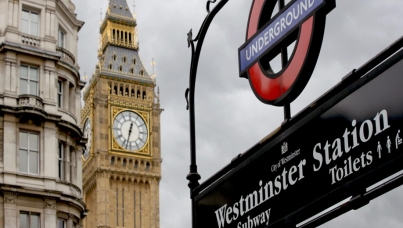Postal And Tactical Voting
I apologise for neglecting my duties yesterday, between the BBC and ITN, with an interview with Fox News sandwiched in, I failed to file Worcester -3, so that Worcester -2 will double up on postal voting, my intended subject for -3, and tactical voting, planned for today.
Postal Voting
The application date has closed, and postal votes are pouring in, and according to our survey for the Sunday Telegraph carried out May 31 to June 2, some 10 million people have applied either for a postal votes (6%) or for a proxy vote (4%). On the Today Programme yesterday a spokesman for Consignia/the Post Office said that they thought as many as 20% of the electorate would vote postally in this election. And pigs will fly.
In April we conducted a survey into the likely take-up of postal votes under the new system for the Institution of Citizenship, and found that when told that "The Government has changed the law so that registered voters can obtain a postal vote if they want one.by ringing their local Council and asking for a postal vote" some 2% more people said they were "certain to vote" than without that knowledge, raising the "certains" from 52% to 54%, with the "very likely" respondents to drop from 17% to 15%.
Other categories shifted a point or two, but it did not appear to increase the likely turnout by more than a point or two.
At the outset of the campaign, May 8, 2% of people said they had already applied for a postal vote, and another 4% said they planned to; in our latest survey, after the date for applying had closed, 6% said they had obtained a postal form, as noted above.
Taking the postal ballots and proxies together, the highest use of postal/proxy voting is among the elderly (13%) and unskilled working class (DE) category (15%), which is of course highly correlated, as persons living only on state support fall into the DE category. As the latter is also correlated with voting Labour, it seems that the traditional bias on postal voting favouring the Tories may not be the case this time. While 36% of the ABs in this survey say they intend to vote Conservative, only 17% of DEs do.
Otherwise, there is little difference across the country as to the intention to vote postally, or by proxy, by gender, region of the country, urban/rural (surprisingly), party support or commitment to vote for one party or another.
I recall that back in my first election, 1970, the late Iain Macleod at the Tory press conference on Jun 16 stated that the Conservatives would get 30 seats simply through their superior organisation of the postal vote. At that election there were 32 seats where the number of postal voted included in the count exceeded the Conservative majority. According to Butler and Pinto-Duschinsky, it was decisive in just six seats, but could have been the margin of victory of as many as 17.
It isn't like that today. For several elections, Labour have been thought to have outperformed the Conservatives at getting out the postal vote, as postal voting has become easier and easier to get, to the point that in this election in one seat as many as a third of electors have applied for postal ballots. Yet up until now it seems not to have made much difference. Some 625 thousand postal votes were cast in 1970, and only about 750 thousand in 1997, up some 30 thousand from 1992, despite the loosening of the rules.
They are experimenting with postal voting in American in the various states. In Oregon, nobody went to the polls on November 7 to vote in the presidential election, as voting was entirely postal. In Michigan, everyone aged 60 and over automatically gets a postal vote application, to use or not as the voter sees fit. In Oregon, the closing of the ballot places and going over entirely to postal voting lifted the turnout significantly.
Tactical Voting
Tactical voting seems to be up to the level achieved at the last general election. Then we found that when asked "Which of these comes closest to your reasons for voting for [party indicated], 'It is the party which most represents your views', or 'The party you support has little chance of winning in this constituency so you vote for the [indicated] party to try and keep another party out'?", 10% a week before the election said it was more to keep another party out. This time the figure is the same.
The most interesting aspect of this analysis is in the comparison by party support: among Labour and Conservative voters alike, 7% said they were voting to keep another party out, while among Liberal Democrats, one in four (25%) of intending Lib Dem voters said they were doing so to try to keep another party from winning in their constituency.
Labour is Winning the Campaign
The Labour Party is thought to have won this election hands down. When asked "In your view, which of the political parties has run the most effective campaign so far, over the election just over a third have said Labour, three times the number who say the Conservatives. In our last poll, May 31 -- June 2, 37% said that the Labour Party had run the best campaign, 19% the Liberal Democrats, and only 11% the Tories. Among Tory supporters, only 31% say that their preferred party has run the best campaign.
ICM's Swinging Both Ways
ICM published three polls over the past two days. In the Observer, they projected their 46% Labour, 34% Tory 15%, Liberal Democrats share to a 129 Labour majority in the House of Commons. This would suggest about a 3% swing to the Tories since 1997, and a drop in the overall margin for Labour of 50 seats.
In the News of the World, their poll in 139 marginal seats was headlined 'Poll shows Blair will win by 197 MPs', based on a 4.25% swing to Labour in these seats from 1997, and would boost Labour's margin by 18 seats.
In the Standard yesterday, their 47% Labour, 30% Conservative, 18% Liberal Democrats result nationally would be a 2.5% swing to Labour, and projecting it would result in Labour losing about 26 seats, although as their political section on their website is down at the moment, I can only take what would be the likely share of seats on their "Variometer" by taking the 211 seats we think this would represent on a straight swing and deduct the 58 seats their model shows that the 1997 election would have resulted in if it were held today, as if you put in the 1997 results into their model, you do not get the 179 seat majority that actually happened, but 121 seats in the virtual world that this represents.
As the man said, they can't all be right. Which is it Nick, 129, 153 or 197? They were all done about the same time, and presumably on the same weighting and adjusting principles which resulted in the reduction of the Labour lead from 18% to 12% in one poll. I think we should be told.
Polling
Polling is a marriage of the art of asking questions and the science of sampling. It is a simple business really, all we have to do is ask the right questions, of the right sample, and add up the figures correctly. At MORI, since its entry into the public polling arena in 1975 for the Sunday Times, we have made our methodology transparent, and open to inspection for anyone who wishes to see how we obtain the findings which our clients publish in their newspapers, radio and television.
We continually carry out experimentation on our methods, and have revised them over the years. The book I write with Roger Mortimore several years ago, Explaining Labour's Landslide (Politico's), makes clear just what our reaction was to the review of the Market Research Society following the unusual failure of the polls to accurately forecast the general election in that year.
Yes, forecast, for the final polls taken on the eve of elections are designed to do just that, unlike (in our view) polls in between elections. We do not "prompt" as we believe we are taking the pulse of the nation at that point in time, not trying to judge in some abstract way what might happen if there had been an election on the following day, when the respondent knows full well that there will not be.
Once the election is called, we change our question wording from the "How would you vote if there were a general election tomorrow?" which is asked month in and month out until the Prime Minister calls an election to "How do you intend to vote at the general election on [June 7]?"
Further, when nominations close, we shift to a replication of the ballot, with the names of the candidates in each constituency shown to the respondent. On the final poll, usually conducted the Tuesday night/Wednesday to mid day before election day, we also then use a number of questions which "test" the respondent's will and conviction to support the party they say they intend to vote for.
Then, going back to the eve of poll meetings with the late Robert Carvell, dean of political editors, our poll for the Standard on Election Day, precisely accurate in 1983 and within margin of error on the outcome on most occasions.
In the past we have asked certainty of voting, care who wins, definitely decided, and of course we record those who say they will not vote, are undecided and those who refuse to say.
We then look at the impact of each of these on the voting intentions recorded 'raw', and judge if there is an argument to apply all or any combination of these to our final projection.
We also ring back people who we have interviewed before to see if they have shifted and if so in which direction. It is then, explaining openly what we have done, that we turn from being reporters of the views of the public, to forecasters of voting behaviour. Then, on the eve of poll, recognising that in those last 24 hours, even in the polling booth, some people will change their minds.
We work within the limits of sampling, and the vagaries of turnout, weather, last minute events, and other factors which limit the ability of anyone, whether they be weather forecasters or economists, to foretell the future.
We try hard, and can never, except by luck, be spot on. Why some interviewers on the media expect us to be just says we haven't done enough to educate them in the limits of our trade-unions.
The detailed explanation of Gallup's revised methodology is to be welcomed, and we welcome in turn any question of just how we weight our data and the effect this has on the published figures. We would also welcome other pollsters to be as open about their procedures with us, and with the readers, viewers and listeners to their findings.
Two days and counting.



